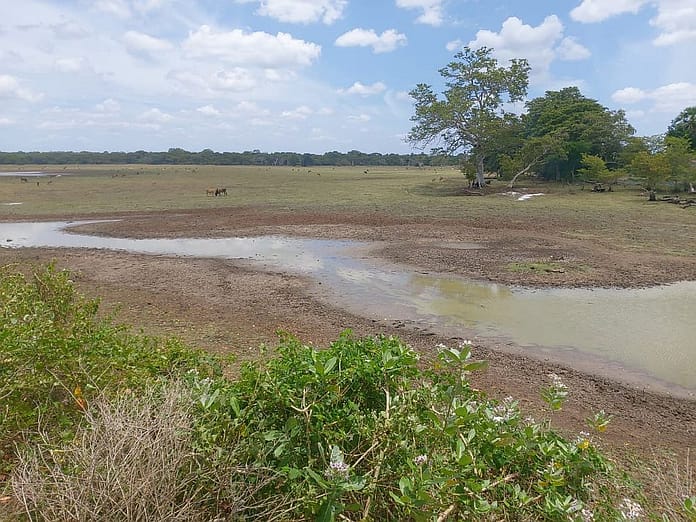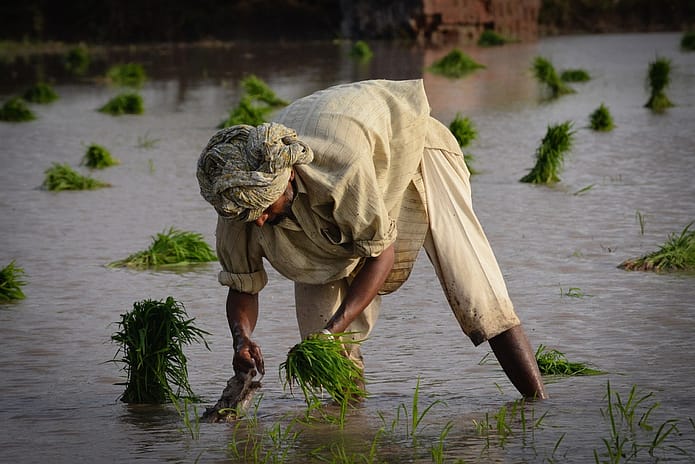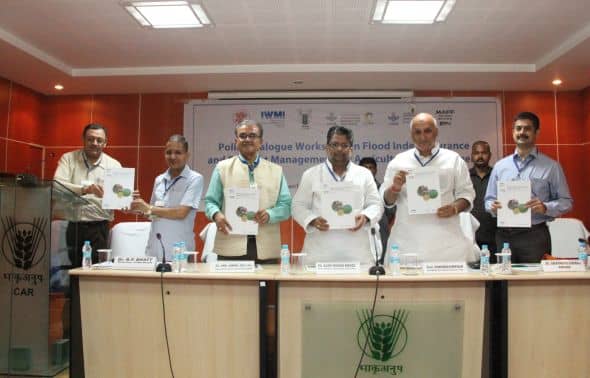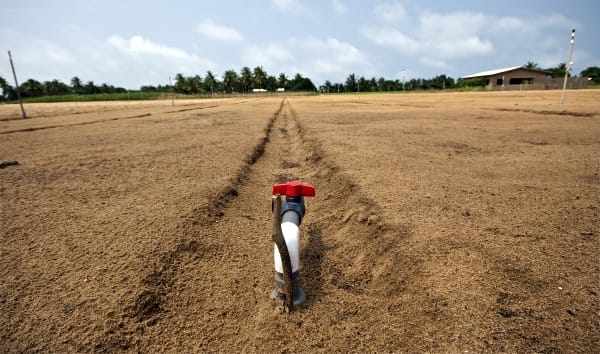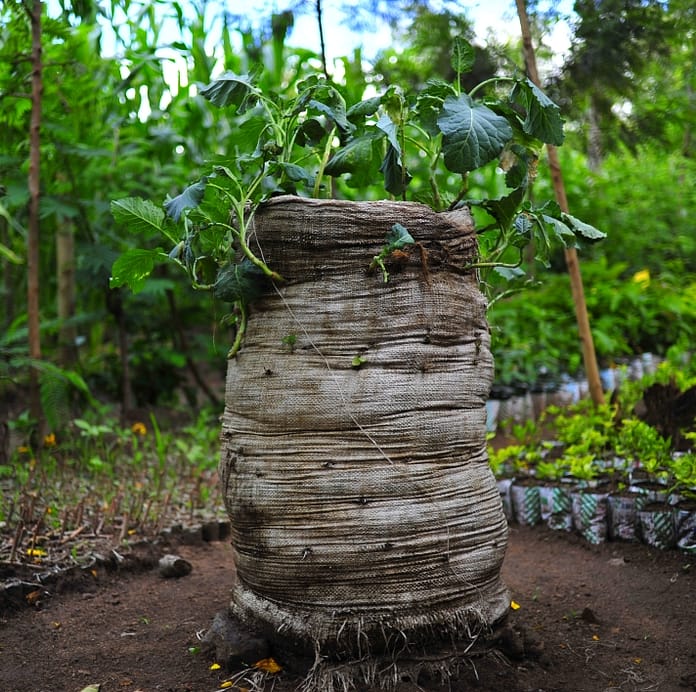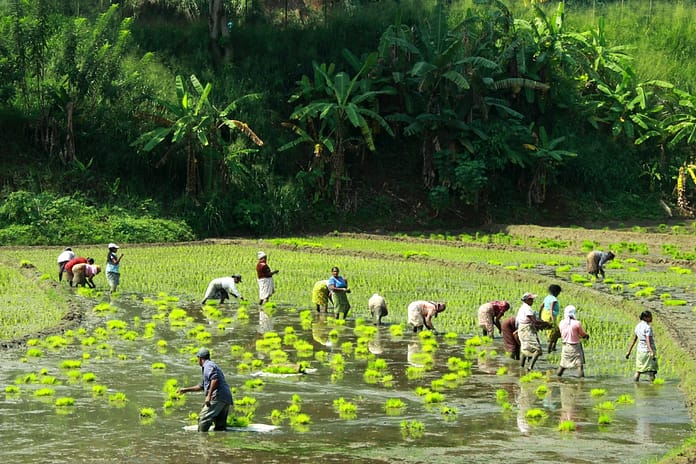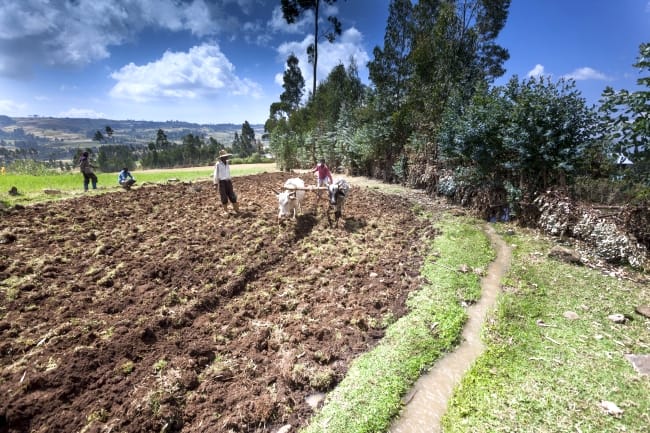The International Water Management Institute (IWMI) hosted the 11th Symposium of the Lanka Rain Water Harvesting Forum (LRWHF), ‘Mainstream rainwater harvesting as a water supply option’, on September 5, 2014. The symposium, held in the wake of a severe drought that swept across two-thirds of Sri Lanka, helped to reinforce the need to make better use of the country’s erratic rainfall by storing it and using it during times of water scarcity. Hon. Dinesh Gunawardena, Minister of Water Supply and Drainage, was the chief guest, and Her Excellency Michele J. Sison, Ambassador of the United States of America to Sri Lanka, was special guest at the symposium.
Addressing the gathering, Hon. Dinesh Gunawardena stated that about 60% of rainfall in Sri Lanka flows to the ocean. We could reduce this outflow if we increase rainwater harvesting. The cost of pipe-borne water could also be reduced substantially, if more households harvested rainwater. The Government of Sri Lanka adopted a national policy on rainwater harvesting in 2005.

Photo: Manoj Jayasuriya
Shanthi De Silva, Senior Professor in Agricultural and Plantation Engineering, Open University of Sri Lanka, presented her findings based on a study of changing rainfall patterns in the central hills, in particular, Kandy, Nuwara Eliya and Ratnapura. She stated that the amount of rainfall received from the southwest monsoon had increased by 10% during 1999 to 2008, and rainfall received from the northeast monsoon had declined by an average of 10% in these areas during the same period. According to her predictions, by the 2050s, the southwest monsoon would bring further increases in rainfall to these areas. However, these areas would experience further declines in rainfall from the northwest monsoon. The central hills would then face extreme weather events that would veer from severe droughts to floods during the two monsoons, the latter of which could contribute to landslides and destroy the thriving hill-country vegetable production which supplies most of Sri Lanka. One means of mitigating these extreme weather events would be to store floodwater for use during dry periods.
In his keynote address, Hans Heijnen, Vice President, International Rainwater Catchment Systems Association (IRCSA), stated that during his work in Sri Lanka in the 1980s he saw few rainwater systems, because rainwater harvesting was considered a poor man’s approach to storing water at that time. However, in the next decade, rainwater harvesting was thought to be a good option because the storage systems are simple to construct from inexpensive local materials and can be used in most locations.
Although Sri Lanka has nearly 50,000 domestic rainwater harvesting systems today, a study conducted by Mohamed Aheeyar, IWMI researcher, and Tanuja Ariyananda, Executive Director, LRWHF, found that about half the rainwater storage tanks were not in use because they lacked some essential components. They recommended that organizations providing these storage systems should ensure that these components were in place before presenting them to communities.

Photo: Manoj Jayasuriya
C. S. Weeraratna, Director, LRWHF, stated that rainwater could be used to reduce the severity of Chronic Kidney Disease of unknown etiology (CKDu), because it is one of the purest forms of water. Rainwater is free from chemicals such as fluoride, calcium and magnesium, which are present in groundwater in the dry zone.
However, Suharda Ranasinghe, undergraduate from Liverpool John Moores University, UK, stated that drinking rainwater for long periods could lead to health problems due to its low mineral content. One solution could be to mix rainwater with groundwater before drinking.
Niroshan Bandara, intern with Yann Chemin, Researcher – Remote Sensing, IWMI, presented a design for a rain gauge they had developed that can track five minutes of rainfall intensity. Information on how much and how often rainfall was experienced in an area is vital for harvesting rainwater. This shortfall had prevented institutions from assessing forthcoming changes in rainfall patterns, which will help people to take steps to protect themselves against the imminent threats of extreme weather events such as droughts and floods. The new rain gauge was developed using low-cost materials that can be purchased off-the-shelf and using open source software. It can also be customized to suit many research and monitoring requirements.


